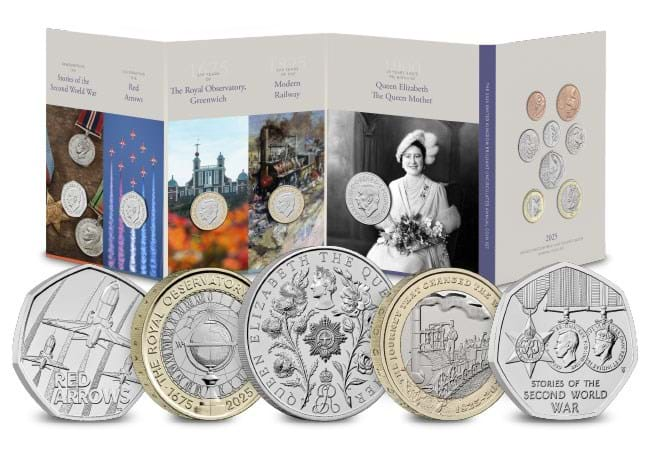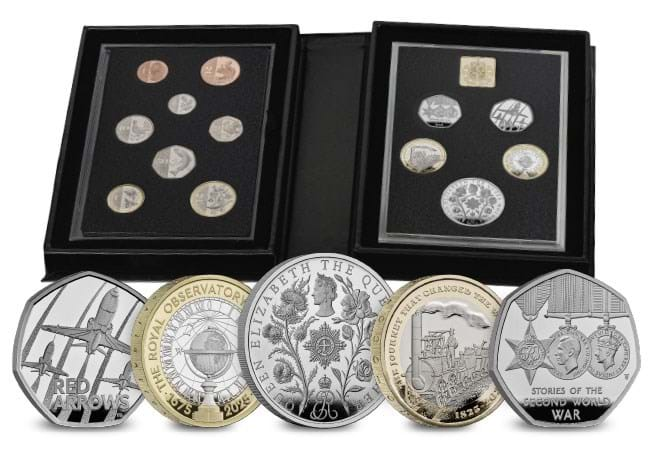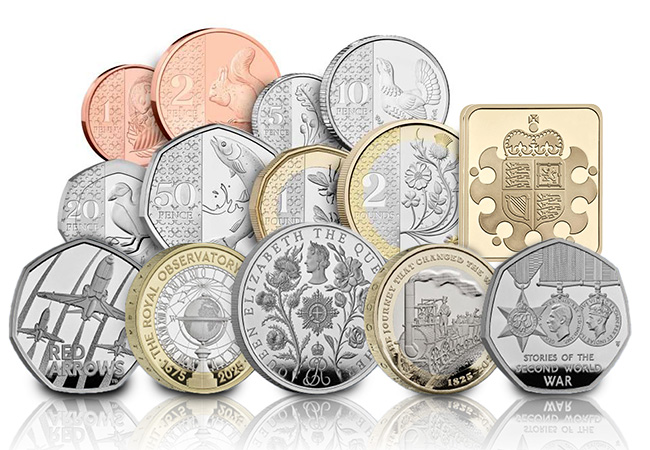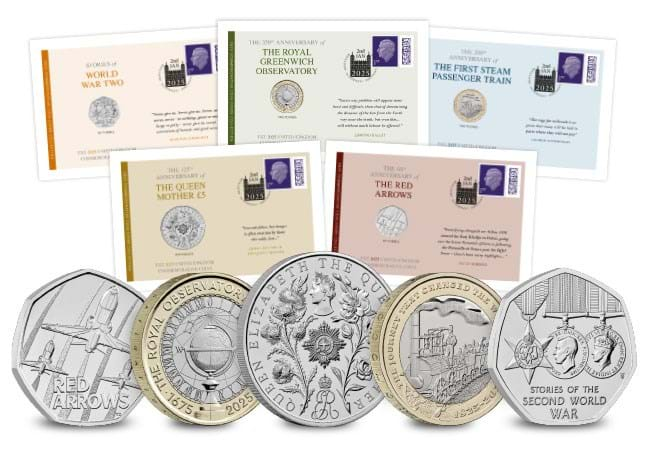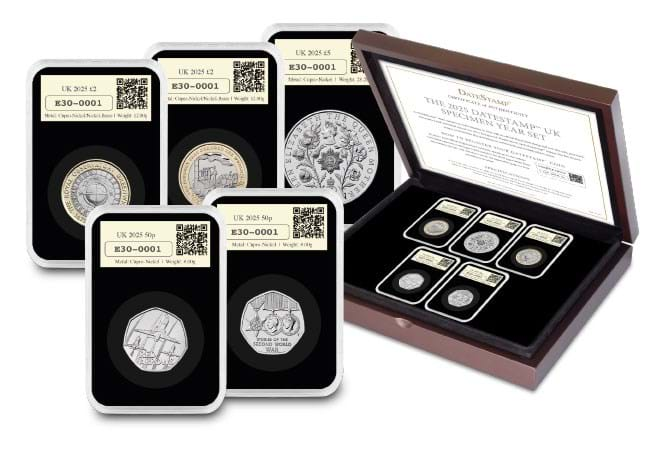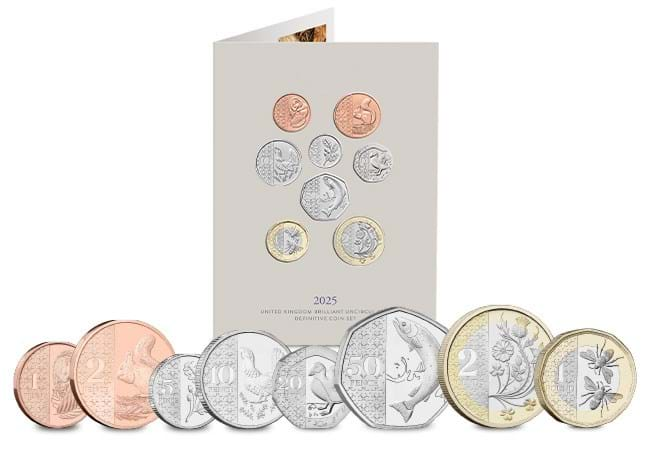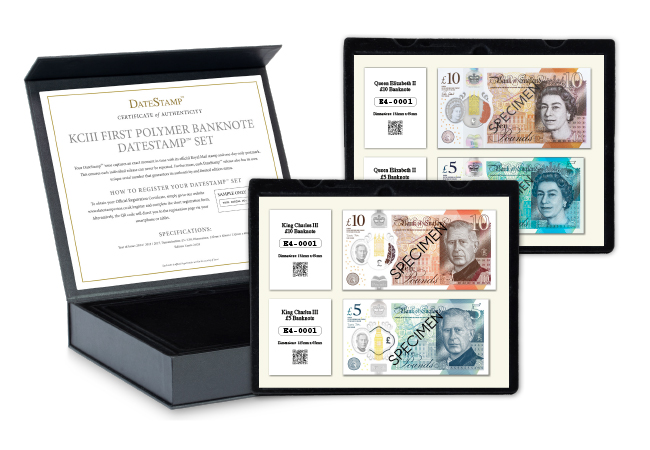Posts Tagged ‘datestamp’
2025 UK Annual Coin Sets: Available Now!

The start of a new year is always exciting, and what better way to celebrate 2025 than with the release of the brand-new UK Annual Coin Sets? Featuring stunning designs and commemorating key anniversaries, these sets are a must-have for collectors. With various options to suit every type of collector, let us be your guide to the best ways to own these important coins.
Official 2025 UK Annual Coin Set – Brilliant Uncirculated

This set brings together all the new 2025 definitive coins, from the £2 to the 1p, alongside five commemorative coins marking the years important anniversaries:
- The 350th anniversary of the Greenwich Observatory £2
- The 200th anniversary of the first Steam Passenger Train £2
- The 60th anniversary of the Red Arrows 50p
- 80 years since the end of World War II 50p
- The 125th birthday of the Queen Mother £5
Find out more information about each new commemorative coin by clicking here.
Each coin is struck to a Brilliant Uncirculated finish, free of blemishes and scratches. Presented in official Royal Mint packaging with detailed information about each coin, this set is available for just £75 (+p&p).
Official UK 2025 Proof Annual Coin Set

For those seeking the pinnacle of craftsmanship, the Proof Set is the ultimate choice. Limited to just 7,500 sets worldwide.
This set includes the same 13 coins as the Brilliant Uncirculated set, along with The Royal Mint’s Annual Medal—a special addition exclusive to this specification. Secure this exquisite set with an initial deposit of just £38 (+p&p).
The UK 2025 Annual Commemorative Coin Cover Collection

Celebrate 2025’s milestones with one of the most limited presentations of the UK’s 2025 commemorative coins. Each coin is featured within its own individual cover and postmarked on their release date—2nd January 2025. Limited to just 250 worldwide, this collection includes the five key commemorative coins of 2025:
- The 350th anniversary of the Greenwich Observatory £2
- The 200th anniversary of the first Steam Passenger Train £2
- The 60th anniversary of the Red Arrows 50p
- 80 years since the end of World War II 50p
- The 125th birthday of the Queen Mother £5
Find out more information about each new commemorative coin design by clicking here.
Each cover features a Royal Mail 1st Class stamp and is accompanied by a Certificate of Authenticity. Secure one from the tiny edition limit today with a deposit of just £25 (+p&p).
The UK 2025 DateStamp™ Specimen Year Set

This exclusive set is forever preserved in time, with each coin postmarked on the release date. Featuring only 1,495 sets worldwide, it includes:
- The 350th anniversary of the Greenwich Observatory £2
- The 200th anniversary of the first Steam Passenger Train £2
- The 60th anniversary of the Red Arrows 50p
- 80 years since the end of World War II 50p
- The 125th birthday of the Queen Mother £5
Find out more information about each new commemorative coin design by clicking here.
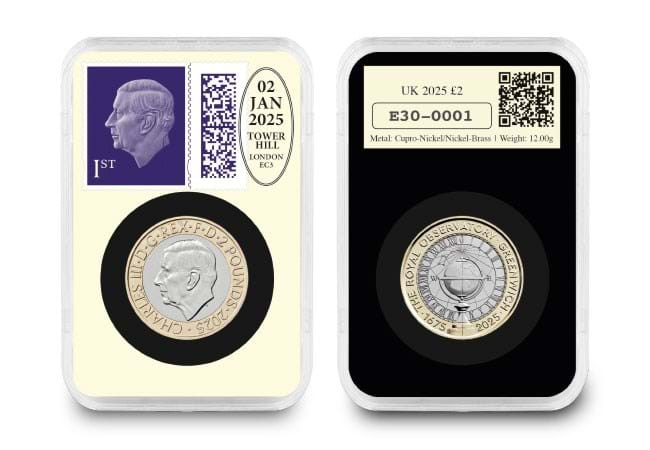
This collection of coins is forever set in time by the official Royal Mail postmark that signifies the coins’ first day of release – 2nd January 2025.
Act quickly to secure this iconic collection, starting at just £22 (+p&p).
The Official 2025 United Kingdom Brilliant Uncirculated Coinage Set

Celebrate the latest designs of King Charles III’s definitive coinage with this set, including the 1p to £2 coins in Brilliant Uncirculated quality. At just £39.50 (+p&p), it’s the perfect way to own these historic coins. By joining the Priority List, you can also secure future Definitive Coin Sets with ease.
Which Set is Right for You?
Whether you’re a seasoned collector or just beginning your journey, there’s a 2025 Annual Coin Set to suit your needs. From the stunning Proof Set to the accessible Brilliant Uncirculated presentation, each set offers a unique way to own a piece of 2025’s history. Act quickly to secure your choice before these limited editions sell out!
>>> View the entire range 2025 UK Annual Coin Sets by clicking here <<<
DateStamp™ Collectables: Capturing History for Generations
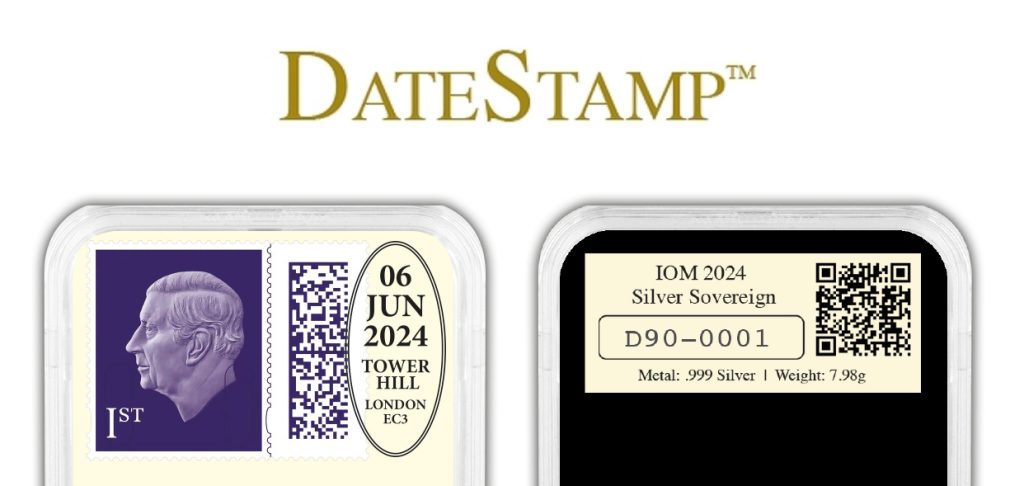
At The Westminster Collection, we take pride in offering collectors unique & exclusive pieces. The DateStamp™ series exemplifies this with a distinctive approach to commemorating iconic moments.
What makes DateStamp™ collectables truly special?
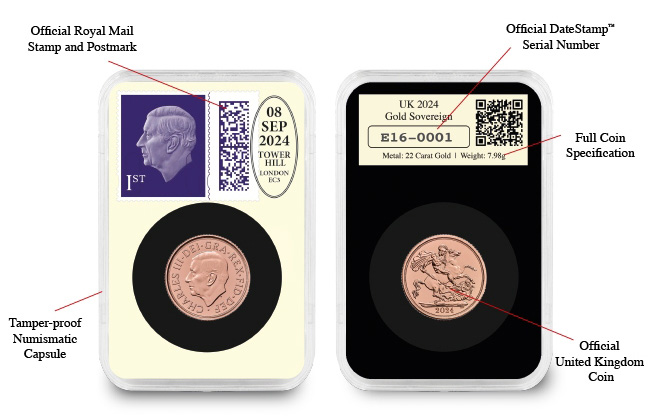
- Official Coin or Medal
Every DateStamp™ includes a fully authenticated coin or medal, ensuring you hold a legitimate and certified piece of numismatic heritage. - Moment in Time
A one-day-only postmark from Royal Mail makes each piece a time capsule, tying it to a significant event. This exclusive postmark is carefully selected to commemorate historical milestones, adding immense value and importance to your collectable. - Registered to You
Uniquely serialised and individually registered, each DateStamp™ coin or medal emphasises authenticity and its limited-edition status. The serial number not only guarantees your collectable’s origin but also highlights its exclusivity within the series, making it an extraordinary keepsake. - Protected Forever
Encased in tamper-proof capsules, DateStamp™ items are preserved in perfect condition. Favoured by collectors worldwide, these protective capsules ensure your coin or medal remains unblemished, retaining its value and beauty for generations to come.
Why Collect DateStamp™?
These collectables have become highly sought after for their historical significance, rarity, and impeccable quality. Owning a DateStamp™ means preserving a part of history, ready to be passed down as a treasured heirloom.
Discover our range of DateStamp™ coins and medals and secure your piece of history today. Visit The Westminster Collection DateStamp™ Range to explore these timeless treasures.
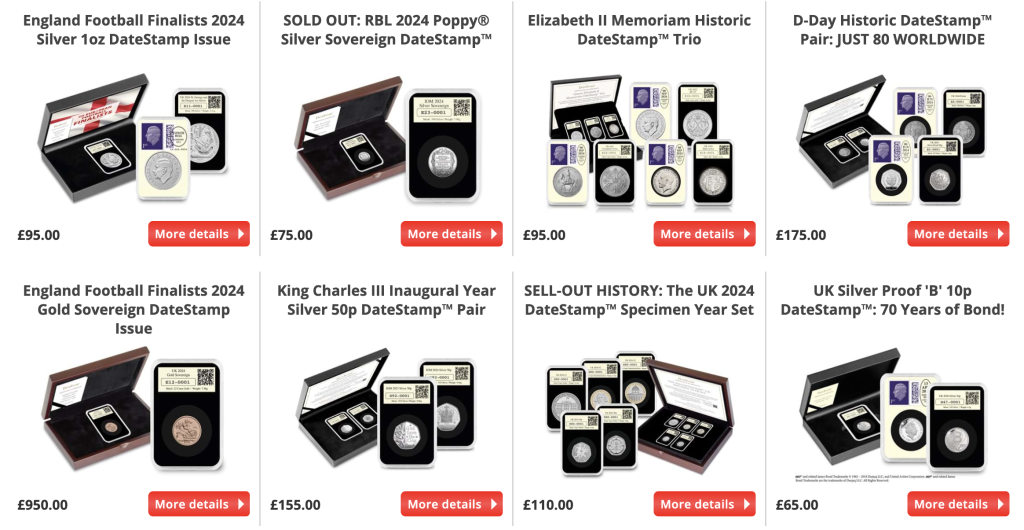
The Evolution of UK Banknotes: From Paper to Precision
The history of banknotes in the United Kingdom is a fascinating journey of innovation, security, and tradition. From the earliest issues to the forthcoming King Charles III banknotes, each phase reflects the technological and cultural shifts of its time.
A Brief History of UK Banknotes
The Bank of England began issuing banknotes shortly after its establishment in 1694. Initially, these notes were handwritten, a far cry from the highly sophisticated currency we use today. By the mid-18th century, partially printed notes were introduced, with the denomination and other details filled in by hand.
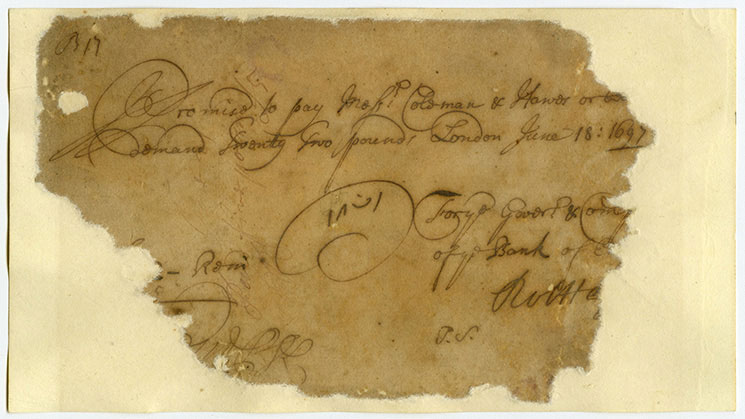
Source: Bank of England website
https://www.bankofengland.co.uk/museum/online-collections/blog/our-earliest-bank-of-england-note
The 19th century brought significant changes with fully printed notes and the introduction of standardized designs to prevent forgery. A pivotal moment in the history of UK banknotes came in 1960 when Queen Elizabeth II became the first monarch to be featured on the Bank of England notes. Her portrait on the £1 note marked the beginning of a tradition of depicting reigning monarchs on the nation’s currency, providing a sense of continuity and national identity.
Security Features: From Simplicity to Sophistication
As technology advanced, so did the sophistication of banknote security features. Early notes relied heavily on the quality of the paper and intricate designs to deter counterfeiters. However, as counterfeiting techniques improved, so too did the security measures.
Modern UK banknotes are a marvel of technology and design. Click on the dots below to explore the key security features:
Introducing the King Charles III Banknotes
In a historic move, the Bank of England is set to release the new King Charles III banknotes on June 5th, 2024. This marks the first time in over 70 years that a new monarch’s portrait will grace the currency, following the reign of Queen Elizabeth II.
The King Charles III banknotes will continue to feature the same high-security features of their predecessors and the new banknotes will initially be available in £5, £10, £20, and £50 denominations. They will circulate alongside the existing Queen Elizabeth II notes, gradually phasing out the older series as they wear out.
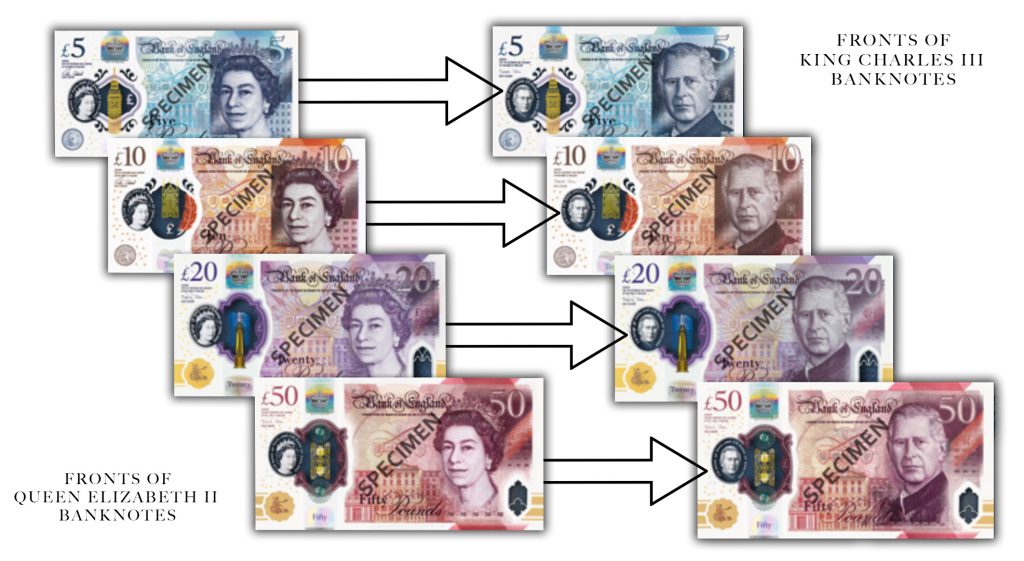
Introducing the DateStamp™ Set: Connecting the Past and Present
To commemorate this historic transition, we are excited to introduce an exclusive DateStamp™ set that brings together the past and the present of UK currency. This unique collection features the Queen Elizabeth II £5 and £10 banknotes alongside the brand new King Charles III £5 and £10 banknotes, each postmarked on the official issue date, 5th June, 2024.
You can now be one of just 2,024 collectors to own this special set.
Click here now to pre-order yours before the official release >>

